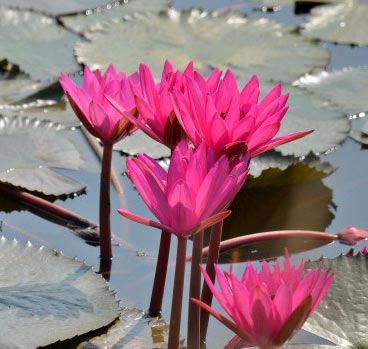Satpura National Park, located in the Hoshangabad district of Madhya Pradesh, is a biodiversity hotspot renowned for its rich and diverse flora. Spanning dense forests, grasslands, and wetlands, the park is home to a wide variety of plant species that thrive in its unique landscape. The national park's vegetation ranges from towering teak and sal trees to patches of bamboo, medicinal plants, and a wide assortment of shrubs and climbers. This diversity provides vital habitats for numerous wildlife species while playing a crucial role in maintaining the region's ecological balance, making it a vital reserve for both flora and fauna conservation.
The forest at Satpura National Park comprises evergreen deciduous forests with abundant greenery and typical vegetation, crafting an enchanting environment that beckons tourists to experience the authentic essence of the forests.


Trees
Being a significant part of the rich Central Indian Forest Ecosystem, Satpura National Park is home to over 1,300 species of stunning flora. The park is characterized by an evergreen deciduous forest, featuring a variety of trees such as Teak, Sal, Tendu, Bel, Mahua, Bamboo, and Mahogany, along with diverse grass species.
The dominant plant species that is commonly found in Satpura National Park is the Sal Tree, which predominantly thrives in the Pachmarhi plateau area of the park, located in the lower plains on the northern side. The area mainly comprises the Teak forest on Basaltic Traps.
With the diverse climatic conditions and factors that support the topographical factors of the national park, result in the growth of typical rich varieties of plants and trees including various medicinal and biological flora for varied purposes, making Satpura National Park one of the prominent spot to study different plant species.
Shrubs and Herbs
Satpura National Park encompasses over 62 species of trees, 58 shrub species, 30 species of smaller trees, 32 species of climbers, and around 64 species of medicinal plants and grasses, in addition to a variety of rare herbs. The area is enriched with numerous rare and endemic plant species, both within and surrounding the reserve. Particularly notable are the Bryophytes and Pteridophytes, which include species such as Psilotum, Cyathea, Osmunda, Lycopodium, and Lygodium. These unique and often hard-to-find plant species contribute significantly to the biodiversity and ecological importance of the reserve.



